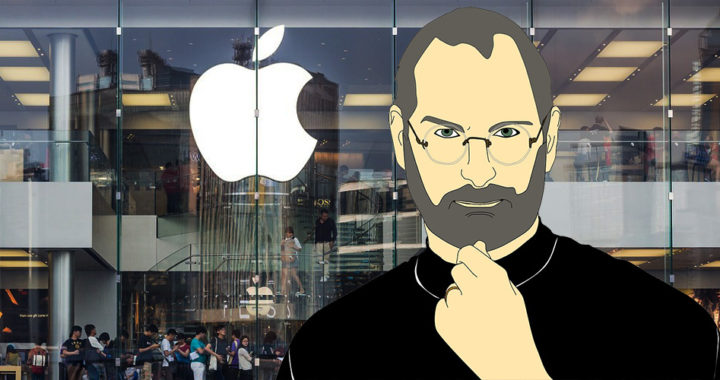Steve Jobs died on 5 October 2011 at the age of 56 due to pancreatic cancer. Despite his demise, his accomplishments and contributions in the fields of computer, consumer electronics technology, and business have left a lasting legacy.
The Jobs Legacy: Accomplishments and Contributions of Steve Jobs
Founded Apple and a Key Contributor to Microcomputer Revolution
Jobs founded Apple Inc. in 1976 together with his colleague Steve Wozniak and Ronald Wayne. They initially introduced the Apple I personal computer. However, they gained wealth and fame when they introduced Apple II in 1977. Their initial products marked the emergence of the microcomputer revolution of the 1970s and 1980s.
Apple II was revolutionary for several reasons. For starters, it is one of the first most successful microcomputers produced for mass consumption. Wozniak designed primarily this product and Jobs oversaw the development of the foam-molded plastic case.
It is important to highlight the fact that Jobs was responsible for introducing a visually appealing personal computer that geared away from the generic wood and metal boxes that typified early microcomputers. The Apple II was different because it appealed toward home users. Nevertheless, Jobs championed this general design principle in succeeding Apple products and it became one of the primary competitive advantages of the company.
Repositioned and Reestablished Apple to Become a Major Tech Company
Apple II and the Macintosh line of personal computers competed against the computer products from IBM during the mid-1980s. Note that Jobs left Apple in 1985. The competition was tough, and the company struggled to regain market share and maintain sales. The arrival of the 1990s marked the emergence of Microsoft Windows as the dominant computer operating system. Widows-based computers outcompeted Macintosh computers.
The earlier failure of Apple stemmed from the fact that it was producing and selling an array of computer products that were redundant and confusing. Nonetheless, Jobs returned to Apple in 1996. His first order of business was to discard all unprofitable products and realign the product strategy based on an established product strategy and design philosophy.
In reintroducing his initial product strategy for the Apple II, one of the significant contributions of Jobs at Apple was a design philosophy that revolved around simplicity and premium user experience, coupled with the creation of product complements. Successful Apple products such as the MacBook, iPod, iTunes, iPhone, and iPad, as well as the macOS and the iOS demonstrated these principles.
Promoted the Importance of Product Design in Marketing and Sales
It is important to reemphasize the design principle of Jobs to appreciate better his contributions and legacy in computer and consumer electronics. Note that according to Wozniak, Jobs did not ever code because he was not a computer programmer nor an engineer. Observed have noted that Wozniak was the inventor while Jobs was the marketing and sales person.
According to the 2011 biographical book “Steve Jobs” by Walter Isaacson, the former president and chief executive of Apple based his design principle on the philosophies of Zen and Buddhism. When translated into a design principle, these philosophies reject clutter and promote minimalism.
The design principle of Jobs became one of the selling points of Apple products. From packaging and outward product design to user interface and overall usability, products such as the MacBook and iPhone, as well as the macOS and iOS have a high degree of user-friendliness while maintaining a premium look and feel, thus appealing to the mass market.
Oversaw the Notable Accomplishments and Breakthroughs at Apple
Aside from his direction contributions at Apple, the leadership of Jobs marked numerous accomplishments and breakthroughs at the company. He essentially oversaw a company that was introducing new products, making innovations, and creating market disruptions.
For example, the introduction of iPod and the iTunes contributed significantly to the widespread acceptance of digital music. In addition, the iPhone marked the beginning of the smartphone revolution. Time magazine even declared it “Invention of the Year” in 2007. The iPad also popularized the adoption of tablet computers.
An article by C. Kuang that appeared on Fast Company mentioned that Jobs was very hands-on. He used his influence in the organization to oversee not only product design but also the specific details of product research and developments. Note that there are 313 patents under his name.
Jobs Also Funded the Predecessor to Pixar and Was the EP of Toy Story
Another notable achievement of Steve Jobs concerning his car as a business magnate involved his USD 10 million funding to The Graphics Group, which was a spinout from the computer graphics division of Lucasfilm and later became Pixar Animation Studios.
He paid USD 5 million to George Lucas for technology rights and another USD 5 million as capital, thus becoming the chairperson of the board of directors. The company was initially losing money despite Jobs introducing ideas and pouring additional capital.
Nonetheless, while contemplating on selling the company in the 1990s, Jobs decided to give the company another change upon realizing the animated film Toy Story could become a major blockbuster hit. The film grossed USD 373 million worldwide, and Jobs was credited as its executive producer.
FURTHER READINGS AND REFERENCES
- Isaacson, W. 2011. Steve Jobs. New York: Simon & Schuster
- Kuang, C. 24 August 2011. What Made Steve Jobs So Great? Fast Company. Available online
- Lemke, D. B. 2007. Steve Jobs, Steve Wozniak, and the Personal Computer. Mankato, MI: Capstone Press






